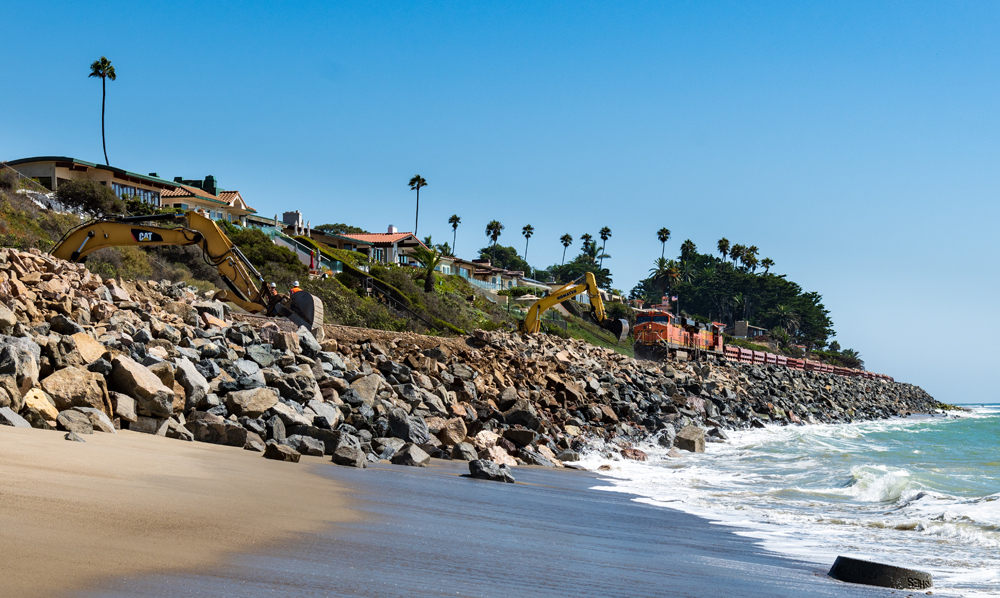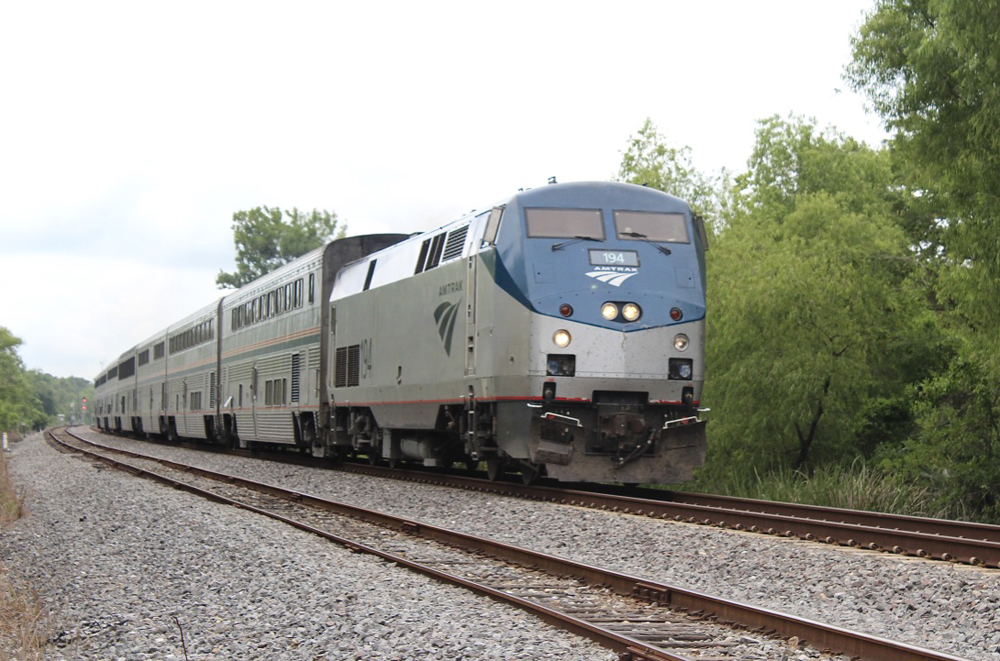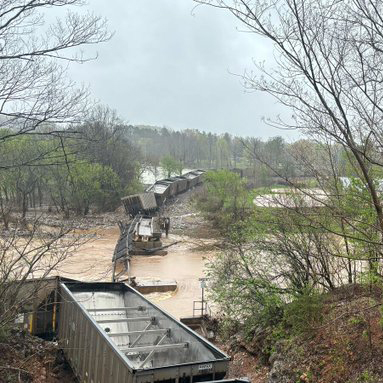
SAN CLEMENTE, Calif. — State and Orange County officials have declared a state of emergency over the instability that has closed the rail line along the Pacific Coast in San Clemente, allowing them to approve $6 million in repairs, the San Diego Union-Tribune reports.
Passenger and commuter rail service along the Surf Line could resume sometime in November after the Orange County Transportation Authority approved the emergency repairs Monday, the Engineering News-Record reports.
The plans call for driving large metal anchors into about 700 feet of unstable hillside in San Clemente adjacent to the tracks used by Amtrak’s Pacific Surfliner, Metrolink commuter trains, and BNSF freight service. Steel cables would be installed diagonally into the bedrock beneath the slope. After temporary anchors are installed to allow rail service to resume, installation of permanent anchors would begin in January 2023.
The ENR quoted OCTA Chairman Mark A. Murphy as saying in a statement that the board’s action “will allow us to move forward with a more effective interim solution to prevent the tracks from moving and to safely restore rail service through this vital corridor.”
Pacific Surfliner service was halted Friday between Irvine and Oceanside, Calif., because of the unstable slope, while Metrolink suspended operations on its Orange County and Inland Empire-Orange County lines south of its Laguna Niguel/Mission Viejo station [see “Pacific Surfliner, Metrolink halt operations …,” Trains News Wire, Sept. 30, 2022]. Freight traffic continues through the area at reduced speed.
In a Tuesday update on its website, Metrolink said the repairs were expected to take 30 to 45 days, meaning passenger service through the area could resume in early to mid-November.
The LOSSAN Rail Corridor Agency, which oversees Surfliner operations, has established a modified schedule that took effect Monday, Oct. 3, and continues until further notice. It includes temporary suspension of two trains in each direction, details on bus bridges for other trains, and some trains that originate in Irvine. Full details are available on the Surfliner website.
— Updated at 6 p.m. CDT with information on emergency declaration, additional details from Metrolink.













If this line was still owned by a private operator the repairs would already be underway.
Take a look at the picture and read the article repairs are underway.
If you follow the embedded link you get an option to print a properly formatted actual timetable showing all stations and trains on the route! Be still my soul—
Yes, a real timetable!
They should get to work on the tunnel bypass! I think it shows a systematic under-investment in the railway system.
The tunnel bypass is for the Del Mar bluffs, not for San Clemente, two different locations with different problems.
This ongoing situation brings to mind the 1935 hurricane that wiped out the Florida East Coast line to Key West whick was built on pilings and trestle over the water It was an engineering feat and very daring. The ride was exciting, scenic and thrilling but it was only a matter of time before the forces of nature would destroy it. Once again we see a case of man trying to best Mother Nature with his engineering feats and bravado but in the end Mother Nature has the final say. Any of the rail historians out there can remember the Key West line and how it was washed away . Incidently the remains of the trestle and viaduct were converted to a higway before being replaced by a stronger and sturdier roadway which is U S Hgwy 1 to Key West Joseph C. Markfelder
Shows that rail is always vulnerable to interruption but that highway traffic can usually find a way around. There are exceptions here and there but in the general case, rail is the least dependable mode in an incident.
You should have been a truck driver after the Northridge(California) earthquake all those years ago. The locals were up in arms about some of the detours trucks took. Especially at 3am in the morning.
Charles, we’ve had this discussion before. The only reason that today’s highways are more flexible when it comes to service disruptions is because We the People have invested trillions of taxpayer dollars to improve the safety and efficiency of the highway system without regard for ROI nor a profit motive. Our most efficient method of surface transportation, the railroads, have had to compete with this highly subsidized highway system and stay in business which led, quite naturally, to shrinkage of the rail system and its lack of viable route options when disruptions occur.
THOMAS — So noted. I was only stating a fact, not discussing efficiency, ecology, ROI, or anything else. Bridges on the I-System have literally collapsed — Minnesota (I think I-35), Connecticut (I-95), Wisconsin (IH-794). Traffic found a way around the closure. When a railroad shuts down, it shuts down. There is only one railroad into San Diego, period.
In Detroit this past summer, I-94 (the Edsel B. Ford Freeway) was closed for a week for construction. Traffic took the long way around (down the John C. Lodge, over on the Fischer, up the Walter P. Chrysler) without incident …. or just rode one of any number of city streets.
I forgot one. In 1986 if I recall the year, the I-90 New York State Thruway bridges, both EB and WB, were washed out near Rome, New York.